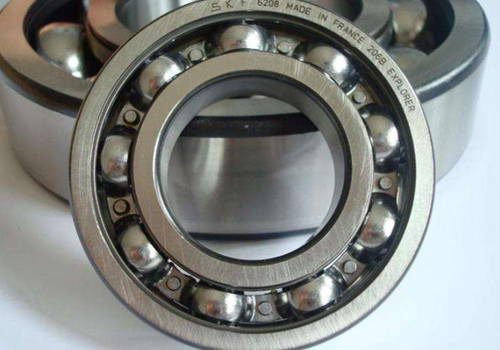Bearing steel is the steel used to make ball bearings, rollers and bearing rings. Bearing steel needs to have high hardness, wear-resistance and elastic limit because the bearing is under great pressure and friction when working, so the uniform chemical composition, strict non-metallic inclusion, carbide content and distribution are required, and it is one of the most stringent steel requirements in all steel categories.
In 1976, the International standardization organization (ISO) described the bearing steel in detail. EN/ ISO 683-17 specified the heat-treated steels, alloy steels and free-cutting steels – Part 17: Ball and roller bearing steel. In the specification, the bearing steel can be divided the bearing steel into four categories: fully quenched bearing steel, surface hardened bearing steel, stainless bearing steel and high temperature bearing steel, with a total of 17 steel grades. Most bearing steel grades in the United States adopt AISI, SAE, ASTM and FS standards. Each steel number representation method is different, and there are often several standard system steel number representation methods in the same type of steel.
High carbon chromium bearing steel
The specification of high carbon chromium bearing steel including:
ASTM A 295 Standard Specification for High-Carbon Anti-Friction Bearing Steel
ASTM A-485 Bearing Steel with High Hardenability Abrasion Resistance
ANSI/ASTM A535 Quality Ball and Roller Bearing Steel
ASTM A866 Medium Carbon Wear-Resisting Bearing Steel
The steel grades consist of five digits, the first digit is “5” for chromium steel, the second digit for chromium content, and the last three digits for average carbon content. For example, 52100 bearing steel with a carbon content of 0.95% ~ 1.10% and chromium content of 1.30% ~ 1.60% is a type of high carbon chromium bearing steel.
| AISI | SAE | FS | Types | Cr-content |
| E50100 | 50100 | FS E50100 | Low-Cr | 0.50% |
| E51100 | 51100 | FS E 51100 | Medium-Cr | 1.00% |
| E52100 | 52100 | FS E 52100 | High-Cr | 1.45% |
Carburized bearing steel
Carburized bearing steel is a kind of alloy structural steel, which is generally expressed in AISI and SAE standards. It is represented by four digits, the first two digits being the steel category, and the last two digits being the number of parts per million of the steel. The specific numbering system of SAE standards is:
| Codes | 2XXX
(Ni steel) |
3XXX(Ni-Cr steel) | 4XXX
(Mo-steel) |
5XXX
(Cr steel ) |
8XXX
(Low-Ni Cr-Mo steel) |
9XXX
(Ni-Cr-Mo steel) |
| Second number | Ni-content | Ni-content | Other alloy content | Cr content | Ni Cr Mo content | Steel type |
| Grades | 23XX(3.5%Ni);
25XX(5.0%Ni) |
31XX(1.25%Ni、0.65%Cr);
33XX(3.5%Ni, 1.55% Cr) |
40XX, 44XX, 45XX(Mo steel);
43XX,46XX,47XX,48XX(Ni steel) |
50XX(0.27-0.65%Cr);
51XX(0.80-1.05%Cr) |
86XX,87XX,88XX
(Ni0.55%,Cr0.50% Different Mo content) |
92XX(Si-Mn steel);
93XX(Ni3.25%, Cr1.20%, Mo0.12%) 94XX(Ni0.45%,Cr0.4%,Mo0.12%); 97XX(Ni0.55%,Cr0.17%,Mo0.20%) |
For example, SAE 4320 contains 1.65% ~ 2.00% nickel and SAE 9310 contains 3% ~ 3.5% nickel







